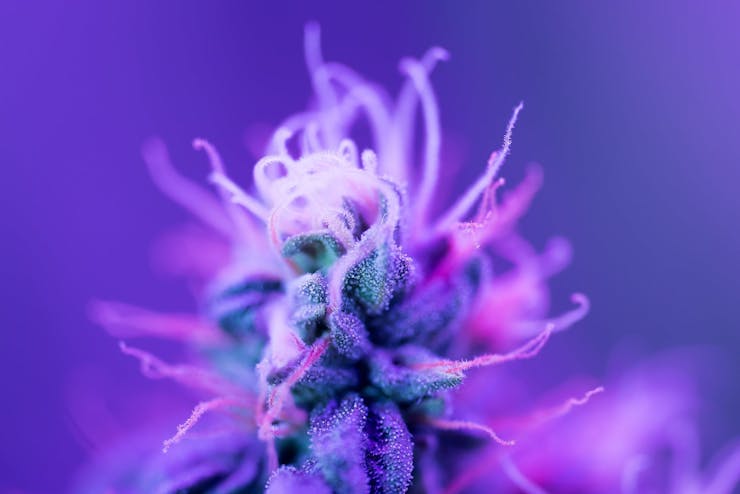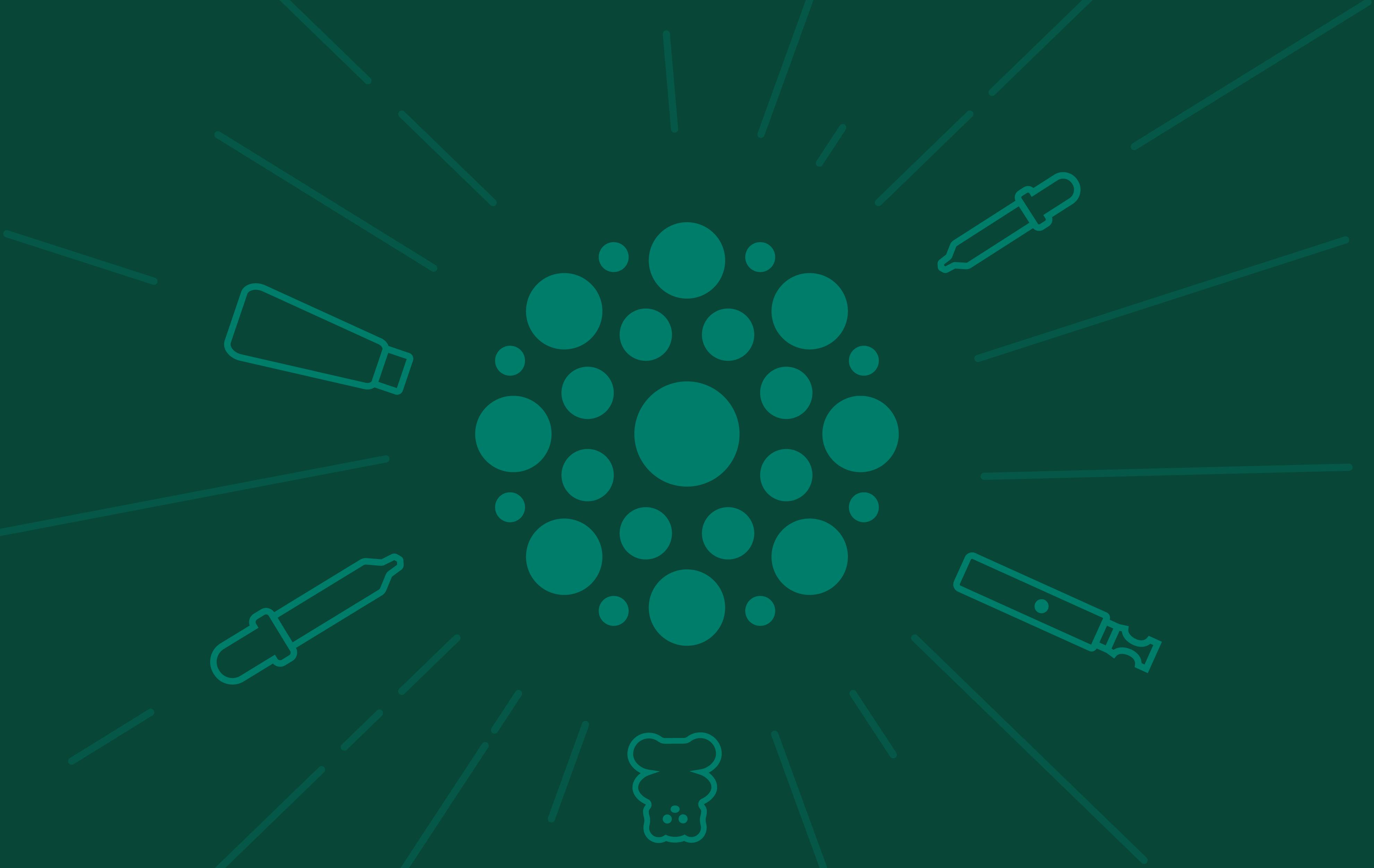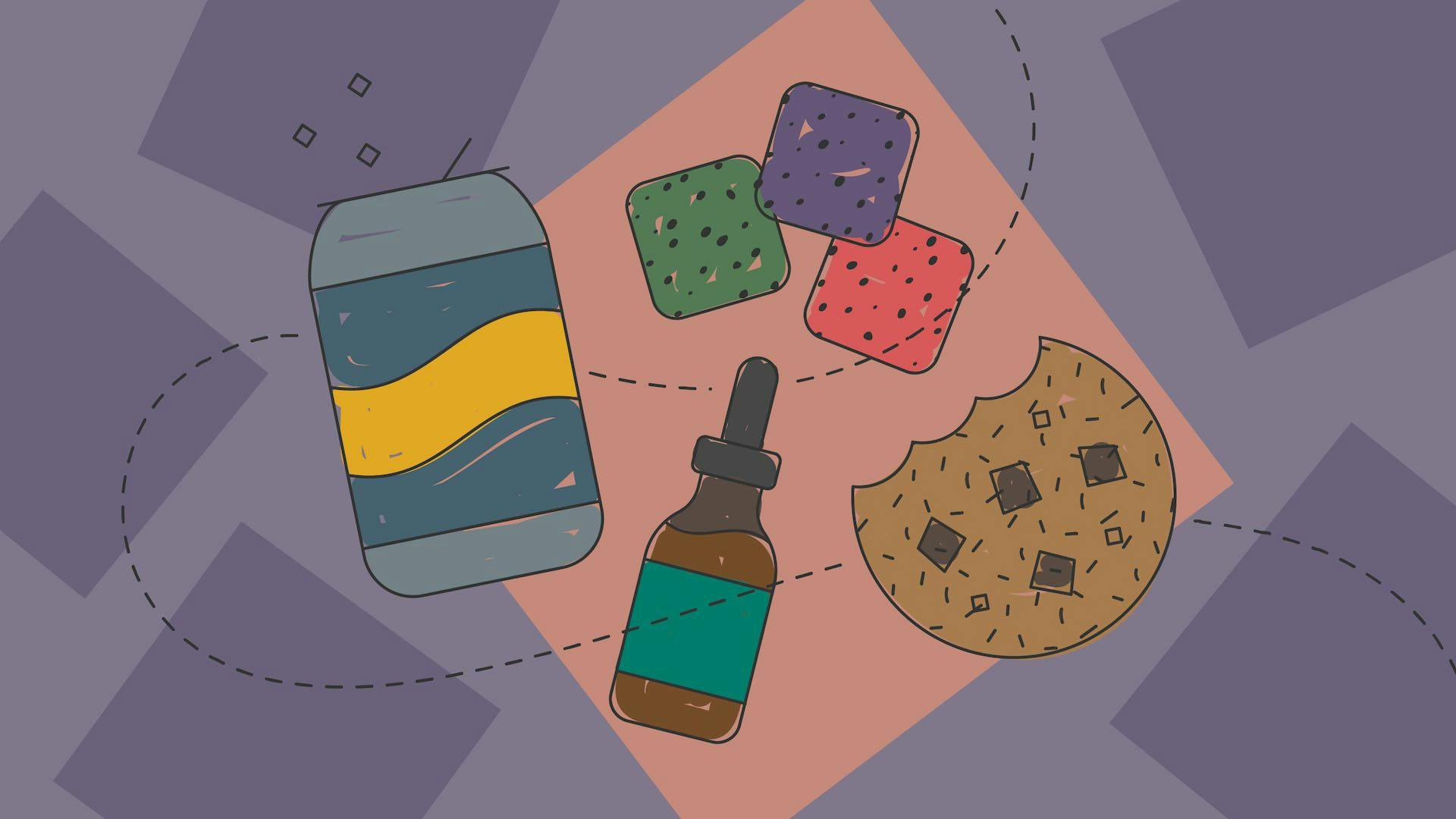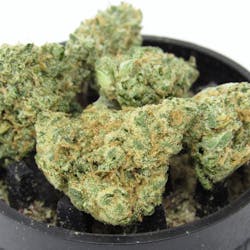Cannabinoids are a fundamental part of the cannabis plant. These naturally occurring chemical compounds contribute to the myriad effects cannabis consumers experience when they light up a joint, eat an edible, or drop a cannabis-infused tincture under their tongue.
While it’s true that cannabis represents a rich source of cannabinoids, cannabinoids actually encompass any compound capable of influencing the body’s endocannabinoid system. Cannabinoids are also found within the human body, in several other plant species, and can even be formulated synthetically.
Distinct cannabinoids can induce effects as far-ranging as euphoria, pain relief, paranoia, sleepiness, and even increased appetite—yes, certain cannabinoids can even cause the munchies.
In this guide to cannabinoids, we’ll explore different kinds of cannabinoids, unpack how these potent compounds can affect the body, and explain the role cannabinoids play in plants.
Types of cannabinoids
Cannabinoids can be categorized into three groups:
- Phytocannabinoids are found in the cannabis plant and a handful of other plants
- Endocannabinoids, or endogenous cannabinoids, can be found in the bodies of mammals, including humans
- Synthetic cannabinoids are formulated in laboratories
Phytocannabinoids
Cannabis represents the most abundant and diverse source of phytocannabinoids, or plant cannabinoids on the planet. More than 150 different cannabinoids are found in the cannabis plant.
However, the cannabis plant doesn’t directly produce cannabinoids. Rather, it produces cannabinoid acids, like THCA and CBDA, that must be activated to become the cannabinoids consumers know and love, like THC and CBD.
Heating or leaving cannabis to dry out over time activates these acids, thanks to a process known as decarboxylation. For example, when you light a joint or heat weed before making cannabutter, THCA is converted into THC: the psychoactive, intoxicating cannabinoid that so many covet. THCA can’t get you high—but THC can.
While the consumption of raw cannabinoid acids is beginning to garner a following, most people prefer to consume cannabinoids that have been activated.
Until recently, it was believed that cannabinoids were unique to the cannabis plant, but new findings suggest otherwise. Black pepper, cacao, echinacea, rhododendrons, and black truffles also contain compounds that interact with the body’s endocannabinoid receptors. These compounds are not the same as the cannabinoids found in cannabis, but are cannabimimetic—they can induce effects similar to cannabis’ cannabinoids.
Endocannabinoids (endogenous cannabinoids)
Endocannabinoids form part of the body’s endocannabinoid system. These compounds, also known as endogenous cannabinoids—”endo” or “endogenous” means “within”—are produced by different organs and tissues in the body and have a similar structure to cannabinoids found in cannabis.
The body can synthesize endocannabinoids to help regulate processes as diverse as pain, memory, mood, immunity, sleep, and responses to stress. The two main endocannabinoids are anandamide (AEA) and 2-AG (2-arachidonoylglycerol). In short, endocannabinoids help to keep critical bodily functions running smoothly.
Synthetic cannabinoids
These compounds don’t occur naturally in plants or people but are synthesized using chemical processes. There are more than 200 synthetic cannabinoids, nearly all of which are designed to exert powerful effects on the body’s cannabinoid receptors.
One such example, AMB-FUBINACA, is reported to be 75 times stronger than THC, the main psychoactive cannabinoid found in cannabis. However, the safety of certain synthetic cannabinoids is questionable as they can have detrimental effects on consumers, causing anxiety, paranoia, and impaired brain function.
Synthetic cannabinoids can also be made by chemically manipulating CBD, which can be extracted from industrial hemp. Another example of synthetic cannabinoid production is the “pharming” of cannabinoids using brewer’s yeast, which acts as a medium for growth—bacteria and algae have been used as mediums too.
While cannabinoids grown from yeast are structurally and chemically the same as those that appear in cannabis, they’re technically synthetic because they are the product of genetic engineering.
The effects of cannabinoids on the body
Ultimately, everyone’s endocannabinoid system, or endocannabinoid tone, is unique. Different bodies vary in their responses to phytocannabinoids. While some of us feel chill when sharing a joint with friends, others can be plunged into a state of anxiety. Researchers are still uncovering how specific cannabinoids influence our bodies.
The endocannabinoid system
Cannabinoids interact with the body’s endocannabinoid system, or the ECS. The endocannabinoid system helps to maintain equilibrium in bodily processes such as sleep, memory, mood, appetite, and pain.
In the simplest terms, the ECS is a signaling network that extends throughout the body. This extensive network is made up of cannabinoid receptors, endocannabinoids—cannabinoids that the body produces—and enzymes that help to create and break down endocannabinoids after they’ve been used.
Cannabinoid receptors form a fundamental part of this system. There are two known types in the body: CB1 and CB2. These receptors are located in the brain, spinal cord, organs like the gastrointestinal tract, and peripheral parts of the body. Endocannabinoids can stimulate these cannabinoid receptors, provoking responses such as feelings of sleepiness, relaxation, or hunger.
How cannabinoids interact with the endocannabinoid system
However, endocannabinoids aren’t the only substance that can stimulate endocannabinoid receptors. The cannabinoids found in cannabis—phytocannabinoids—are structurally very similar to those produced by the body. These plant cannabinoids can bind with the cannabinoid receptors in our endocannabinoid system, triggering responses throughout the body.
The effects delivered by phytocannabinoids are diverse and can include euphoria, paranoia, pain relief, increased appetite, sleepiness, reduced inflammation, and even enhanced creativity.
THC, for example, can induce euphoria, relieve pain, slow perception of time, and stimulate appetite. CBD can alleviate inflammation, ease anxiety, and suppress seizures.
However, evidence is growing that cannabinoids don’t just interact with cannabinoid receptors. Cannabinoids also appear to work on other receptors in the body, such as serotonin 5-HT receptors. The vast array of effects that cannabinoids can trigger are determined by how strongly they can bind to these receptors.
Consumption method
The method of cannabis consumption also influences effects. Different delivery methods, such as smoking, oral consumption, or transdermal application, can strongly influence the bioavailability of cannabinoids. Bioavailability refers to the extent to which a substance enters the bloodstream and can deliver an active effect.
The bioavailability of inhaled THC averages 30%, for example, and the effects can kick off in as few as ten minutes. On the other hand, when THC is eaten in a brownie, the bioavailability is 4-12%, with effects taking up to one hour or more to kick in.
This reduced bioavailability and delayed onset occurs because cannabinoids must make their way through the gastrointestinal tract and into the liver where it is processed. The majority of the THC is broken down in the liver and converted into other products, resulting in low bioavailability.
The role of cannabinoids in the plant
Cannabinoids also have a highly functional role in safeguarding the well-being of the cannabis plant. Cannabinoids accumulate in the sticky, resinous trichomes of cannabis, which are most readily found on female buds.
According to recent research, cannabinoids act as a sunscreen, absorbing harmful UV-B radiation that may damage the plant’s growth. What’s more, studies have shown that increased cannabinoid production occurs in cannabis flowers when they are exposed to extra UV-B radiation.
It’s likely that cannabinoids hold a range of other defensive roles too. For example, trichomes, where cannabinoids are mostly found, are common to many plant species and help to protect against predatory insects and pests, water loss, and overheating.
Cannabis also appears to produce more cannabinoids when exposed to certain stressors, like heat, low soil moisture, or even soil that lacks nutrients. Ironically, it looks like a little bit of stress may be a good thing for cannabinoid production.
Major cannabinoids
THCA and CBDA are by far the best known cannabinoid acids produced by cannabis. These two cannabinoids occur in much higher concentrations than other cannabinoids present in the plant. THC potency has increased over time, suggesting that cannabis aficionados have deliberately bred plants that yield increasingly high THC content.
Both THC and CBD are psychoactive cannabinoids, so they can alter nervous system function and temporarily change perception, mood, cognition, and behavior. THC is intoxicating and can get you high, while CBD does not. Both cannabinoids also boast a range of other physical and mental effects. There’s a vast repository of research exploring their therapeutic uses.
These two major cannabinoids also form the basis for defining cannabis. Nowadays, cannabis strains, or chemovars, are often categorized by their major cannabinoid content. There are three main types:
- Type I: High concentrations of THC
- Type II: Equal levels of THC and CBD
- Type III: High levels of CBD
Minor cannabinoids
More than 150 cannabinoids have been identified in cannabis, and counting. However, the vast majority of these are minor cannabinoids, which make up less than 1% of the cannabis bud. Nevertheless, consumer and expert interest in minor cannabinoids has risen in recent years as many are curious about the untapped potential of these little-known cannabinoids.
Certain intoxicating minor cannabinoids, like delta-8 THC and delta-10 THC, are fast developing a reputation for providing a high. These minor cannabinoids occur naturally in very low concentrations and are often synthesized from cannabinoids in hemp plants to sidestep legal issues.
Researchers are also beginning to delve into the therapeutic properties of prominent minor cannabinoids, like THCV (tetrahydrocannabivarin), CBG (cannabigerol), and CBN (cannabinol). In the future, we may see minor cannabinoids combined with terpenes, flavonoids, and other compounds to formulate personalized cannabis healthcare that targets individual issues and conditions.











